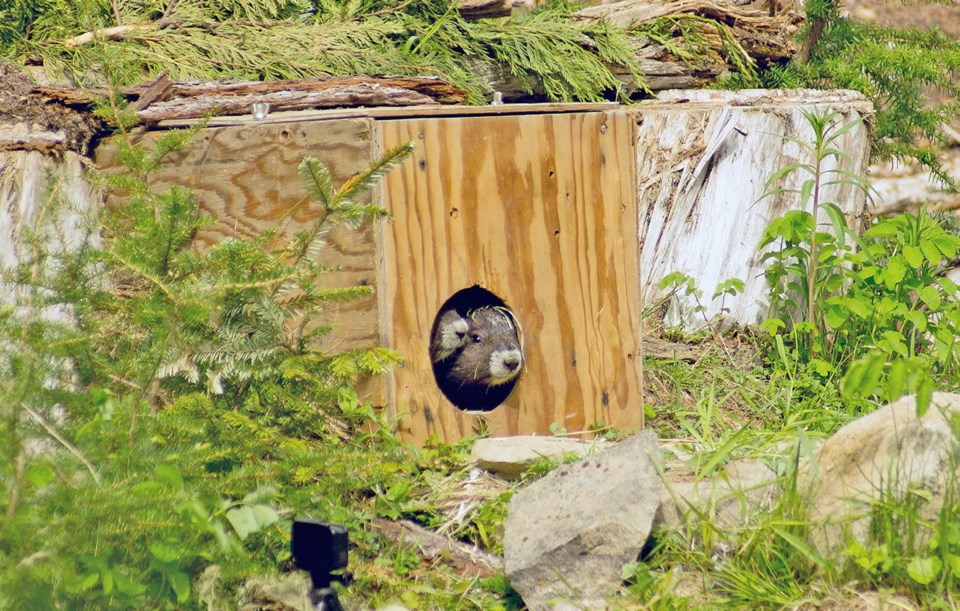Staff members at the Marmot Recovery Foundation were surprised by the recent birth of two marmot babies at their Mount Washington facility.
“A couple of our marmots, Sally and Pepsi, produced pups and we’re pretty thrilled with that,” said foundation executive director Adam Taylor.
Taylor said the marmots were brought in for breeding, but the species tends to breed only once every two years.
They’re also sensitive to being transported from one place to another, and will often take a year off from breeding as a result.
Two more marmots were released Monday into the wild on Mount Washington, following the release of another earlier in June in the Nanaimo Lakes region.
Fifteen more marmots will be released during the summer in Strathcona Provincial Park and Nanaimo Lakes.
The number is “pretty typical” for the last few years,” said Taylor, executive director of the Nanaimo-based Marmot Recovery Foundation, but the plan is to increase those totals.
“We feel that in order to really see the marmot population recover at a speed that we’re happy with, we need to be releasing more marmots into the wild.”
The two released Monday came from the Toronto zoo.
Others from the Calgary zoo are also expected to be released this year.
The foundation will be monitoring marmots born in the wild, which typically begin to show themselves in the first few weeks of July.
The animals spend the first month underground in the burrow. While none have been seen yet this year, there are signs the pups are coming, Taylor said.
“What we know right now is that we have been seeing some marmot moms in the wild that are lactating, so we can see that they are producing milk.”
There have been other positive signs from observations of marmots in the wild, such as strong survival rates over the winter and the fact that some are in spots they would not normally be found.
Taylor said Mount Washington offers unique surroundings for marmots, since the ski hills there function much like marmot meadows.
“The big difference to Mount Washington is all of these people that come year-round tend to scare away the animals that actually eat marmots, like cougars and wolves,” he said. “The result is that [marmots] have really, really high survival here.
“And even more important, we can release marmots here and then catch them again a year later and then translocate them to a place where marmots have a really hard time surviving because of predation — and the marmots do much, much better.”
The Vancouver Island marmot has been in recovery mode since almost going extinct in the early 2000s.
The population has grown from about 30 wild marmots in 2003 to more than 200 in the wild today.
Despite some “frustrating setbacks” along the way, Taylor said he is inspired that the species continues to emerge each spring.
Funding for the recovery of the Vancouver Island marmot comes from the provincial government, TimberWest, Island Timberlands, the Habitat Conservation Trust Foundation, the Fish and Wildlife Compensation Program and individual donors.



